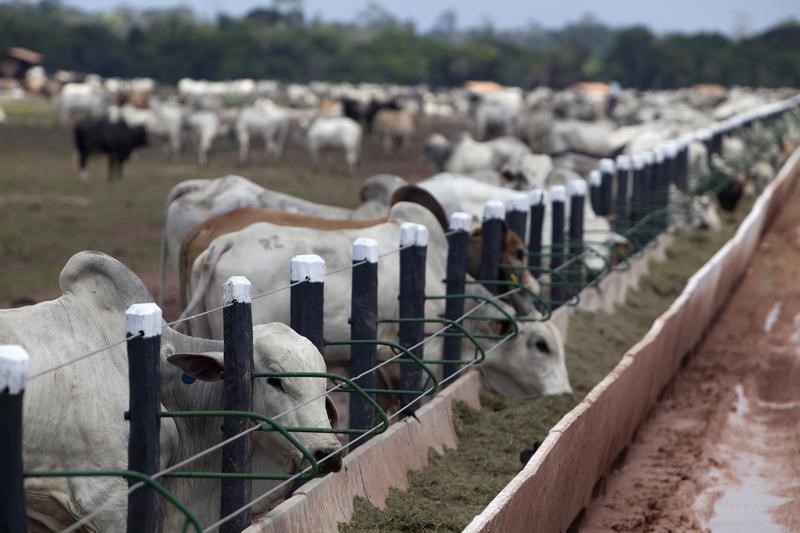SYDNEY, Dec 29 (Reuters) - Heavy rains have hit Australia's largest cattle-producing regions this past week and are expected to help ranchers rebuild herds devastated by a three-year drought, although meat supplies and exports are not likely to recover for some time.
At the start of Australia's annual monsoon season, much of Queensland and the Northern Territory received at least 50 millimetres of rain, according to the Australian Bureau of Meteorology, with pockets in some of the northernmost areas recording more than 300 millimetres.
The rains caused some flash flooding, resulting in the death of at least one person in the Northern Territory and forcing the evacuation of hundreds of people, local media reported.
But the monsoon rains will also benefit cattle farmers who struggled during the prolonged drought. As pastures wilted, farmers sold cattle for slaughter in record numbers, cutting the size of the national herd to at least a two-decade low while beef exports surged to an all-time high.
With the heavy rains aiding pasture growth, farmers are now likely to focus their efforts on rebuilding herd numbers, analysts said, slowing sales to the country's abattoirs and consequently slowing exports.
"There is going to be a prolonged lull in exports, simply because the stocks are not going to be there, and it could take two, three years at least to rebuild stocks," said Phin Ziebell, agribusiness economist, National Australia Bank.
Australia, the world's third largest exporter of beef, has already cut its estimate for exports of the red meat to 1.19 million tonnes for the year to July 2016, from its prior estimate of 1.225 million tonnes.
In the previous year to July 2015, Australia shipped a record 1.35 million tonnes of beef.
After nearly 30 million animals were slaughtered over the past three years, farmers have been left with few cattle to sell, forcing some of Australia's biggest slaughterhouses to suspend operations until the livestock herds recover.
